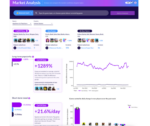
Over the past few years, as work/life balance has become more of a priority for developers, the notion of a “crunch culture” has been the subject of much discussion. Crunch has been especially prevalent in the game development industry, where game developers have come to accept that crunch is just a part of the job.
According to a 2019 study by Take This, 53% of game developers reported that “crunch” is an expected component of their employment. According to the survey, crunch is defined as working more than 40 hours per week for an extended period of time. Crunch is identified by “emotional exhaustion, reduced personal accomplishment, and feelings of hopelessness,” said Take This.
But crunch isn’t just something that happens in the game development industry. Enterprise software developers also experience crunch cultures at work.
RELATED CONTENT: Three steps to reduce burnout
No matter the industry, crunch is often caused by unrealistic deadlines, a lack of communication, and a lack of stability, said Vlad A. Ionescu, chief architect at ShiftLeft.
Chris Nicholson, CEO of Skymind believes that crunch is more prevalent in startups than in established companies. This is because in a startup, they’re essentially trying to find a profitable business model before they run out of money. “Anybody who joins a startup in the early stages really signs up for that pressure,” he said. “They sign up for the pressure, some of the sacrifices. There are things nobody should have to sacrifice, but when a lot of young people sign up for startups, they’re probably putting family on hold for a while, and they’re probably not going to be seeing their friends as often. That’s kind of how it goes. That’s the deal.”
According to Ionescu, there is always a long-term cost to crunch. It may seem good in the short-term to have that increased productivity, but the effects of crunch will almost always catch up to a company. “You cannot really sustain it,” he said. “Either your productivity goes down in the end or your employees start to leave. You get all these side effects that happen long-term.”
To a certain extent, people are paid in prestige just as much as they get paid in salary, Nicholson explained. This would mean employees are more willing to put up with crunch if they’re working for a company they view as prestigious. But according to Ionescu, this form of payment really only matters for a few years. “I think overall this may work for a few years maybe, but in the end companies like Facebook and Google and so on, they want to make a name for themselves as a good employer, where it’s fun and enjoyable to work for them,” said Ionescu. “And in fact, this is probably much more important to them than getting the short-term productivity out of people. And although people might put up with it for a while, it’s never sustainable. And I think prestige comes as a form of motivator for people for sure.”
Phil Alves, CEO of Devsquad, added that the turnover that occurs in crunch environments actually causes more delays than if employees had a proper work/life balance and teams were continuously evolving. “With proper time to rest, employees will be more productive and stick around longer, enabling them to accomplish more in the long-run,” he said.
Crunch leads to burnout
Crunch also leads to burnout, which can have severe consequences, both for the individual and the team as a whole. “This is something serious and it always destroys either the team or the individual,” said Ionescu. “Burnout is no joke. Burnout can happen to anyone, and the outcome can be loss of productivity at best, to things more serious like depression and anxiety and panic attacks and so on. It really takes a toll on the individual, creates tension in the team. It’s a thing you really really want to avoid. And I’ve seen it first-hand. Sometimes people around me are getting burned out and I think as thought leaders of our industry, we should reach out and help out people who are in this situation and talk to them and understand them. In most cases, people are burning out, but they’re not realizing themselves that they’re burning out.”
Burnout can happen in any industry, but it is especially common in the tech industry. At KubeCon | Cloud Native Con, which took place in San Diego in November, Jennifer Akullian, founder of Growth Coaching Institute, an organization that provides coaching to tech executives and organizations, gave a talk on mental health and burnout in tech.
According to a 2016 study by Open Sourcing Mental Illness (OSMI), 51% of tech workers have been diagnosed with a mental health condition by a medical professional. 73% have a mood disorder (like depression or bipolar), 61% have an anxiety disorder (such as generalized anxiety, social anxiety, or a phobia), 19% have ADHD, 12% have PTSD, and 8% have OCD. According to Akullian, these don’t add up to 100% because it is very common for someone to have more than one diagnosis at a time.
OSMI surveyed 1,570 tech employees as part of their research.
“[According to the research], 80% of people endorse that [their mental illness] does interfere with their work,” said Akullian. “So we have a community of high-functioning tech professionals, around 50% of whom are diagnosed with a mental illness. Eighty percent of those people are not functioning to their full capacity.”
According to Akullian, there are some common reasons for burnout, such as not feeling valued at work, not getting recognition for the work you do, and not doing something that is enjoyable. In the tech industry there are additional factors that contribute to burnout, like performing at a very high cognitive level, being physically isolated from teammates, and working on high-stakes projects that often fail. “Putting your heart into something, doing the best you can, exerting yourself using all of your energy and resources, and then it failing, and then it fails again and again and again, and that’s kind of your job — we’re in technology and we’re innovative and in order to move forward and create new things you have to fail a bunch of times first. That takes a mental toll on you as a professional,” said Akullian.
Akullian explained that your brain chemistry when you’re burned out often resembles the brain of someone suffering from a mental illness. When you’re burned out, areas of cognition, processing speed, working memory, and problem solving all tend to be impacted.
It’s hard to shake the crunch mindset, even once you’re out of that environment
DevSquad’s Alves said that many of the company’s employees come from crunch environments. He said he’s noticed certain differences between these employees and ones who haven’t been exposed to crunch culture.
One difference is that employees coming from a company where crunch was present work fast and are more results-oriented. This is a good thing, but also can make them more likely to make mistakes since they are working too quickly, he explained.
In addition, those employees tend to stay highly productive even once they’re in a more sustainable environment and handle stressful situations well because they are used to working under pressure 24/7, he explained.
Alves added that it takes some time for those employees to actually adapt to the more sustainable work schedule. “It’s difficult for them to register that they won’t be fired if they want to go home and spend time with family and friends,” he said. “When you say that they won’t be penalized for working a normal 40 hours per week, they don’t believe you. Most people work 60 hours a week when they first start and slowly start to reduce as we keep enforcing that we don’t require that, and that we think it’s important to take care of our body and social life. Eventually reality sets in and they start to adapt.”
Crunch in video game development
Crunch is especially prevalent in the video game development industry. As more horror stories have emerged from game developers, gamers have had to reconcile their favorite games with the “crunch culture” that went into developing them.
Crunch culture has been permeating the game development industry for over a decade. For example, in 2004, LiveJournal user “ea_spouse” wrote a post that revealed that their partner who worked at EA gradually started working longer hours until ultimately he was working mandatory 13 hour days, seven days a week — that’s about 85 hours per week — for no additional compensation.
Several other exposés have been published in the past few years, from Kotaku sharing the experiences of developers on Rockstar Games’ “Red Dead Redemption 2” to Polygon reporting that some developers on Epic Games’ “Fortnite” had worked 100-hour weeks at points to get “Fortnite” updates out.
The history of crunch in video game development
Initially, crunch was the result of a Box Product mentality that created intense time constraints, explained Virginia McArthur, consulting executive producer at game studio Endless Studios. Crunch was especially common as game developers worked to get physical game discs ready for the holiday time frame, which meant completing a game by August.
In the early 2000s, there was a mind shift and platform shift that allowed teams to deliver faster. Beta releases opened up games to early feedback and allowed players to experience a game before its release, which made them feel like a part of the development process, McArthur explained.
Digital games also allowed for more flexibility on ship dates. They also allowed game studios to build R&D teams that could take their time to develop games that would get tested and played before they were green-lit into production. “With this new approach, once in production, teams could evaluate the right features and team size needed against the budget and funding available and then pick a ship date,” said McArthur. “Larger companies had the luxury of doing this with new titles, but for older franchise titles, risk for crunch still existed. You had to get products out to get sales and importantly, keep the team.”
According to McArthur, when free-to-play games eventually started entering the market, it led to a degradation in game play quality and “low-budget titles that could be made with smaller teams for less, resulting in more intense crunch and ridiculous timelines.”
McArthur added that in the early days of gaming, developers were relatively young and more willing to work longer hours. When these developers aged and started families, these crunch schedules were no longer viewed as a badge of honor. “Now, working smarter and efficiently has become the mode of choice,” said McArthur. “Agile still exists, but it’s important to work with your community, focus test early and use digital and social distribution channels to stay on top of what players want and develop better games.”
Nicholson, also believes that crunch is so prevalent in games because unlike a piece of software that gets regular updates, games are typically only played through once. If a game is buggy, it ruins the player’s one-time experience of it. This puts a lot of pressure on game developers to get things right.
It’s not as important at a SaaS company to get things right on the first release, Nicholson explained. “It’s a piece of software that runs in the cloud,” said Nicholson. “Let’s say I host it. I can update that five times a day. And in five times in a single day I can improve my users experience of it … Deadlines don’t have the same meanings for web-hosted SaaS companies because they know that their errors are not ruining their users unique experience and they know that they’re going to have a chance to recuperate.”
Crunch doesn’t have to happen — How can it be eliminated?
There are many ways that crunch can be reduced or even eliminated. The method for eliminating crunch depends on what the cause of it is. Sometimes crunch can be caused by unrealistic timelines or a lack of stability that forces teams to be constantly fixing things that are breaking, Ionescu explained. “I think both of these cases have their own situations and ways to deal with it, but overall I think there has to be some kind of honest conversation at the management level,” said Ionescu. “You can’t have someone ask for things that are not realistic and then maybe the engineering groups are running with it. The engineering teams need to take ownership of this crunch problem and say the way it is there’s no way to build this in X amount of time. You have to take into account what’s actually realistic. And you cannot take shortcuts. You can’t say ‘Okay, we’re not going to do QA or good engineering practices just to save time.’ It looks like it’s saving time in the short run, but in the long run it’ll burn people out and cause much more work than initially necessary.”
McArthur agrees that communication is key to preventing crunch. “Engineering should work closely with the PR and marketing teams to set realistic communication targets, review what the market demands and build a schedule accordingly in order to develop realistic, healthy timelines,” said McArthur. “Today, decisions are no longer siloed at the executive staff level and smaller teams have equal input on what is realistically doable.”
Another way to reduce crunch is to “release early and often,” McArthur explained. For example, at Endless, which is a game studio, they put more of a focus on smaller titles, and make sure to include time for QA and community feedback. “We also strategically release many different game options, let our players decide which ones they like the best and then evolve the title,” she said. “This alleviates a crunch to develop a perfect game, while also revealing what users really want to play.”
Alves also believes that crunch is often the result of weak leadership and a lack of planning. By managing stakeholder expectations and training leaders, crunch can be avoided.
The future of crunch culture
Fortunately, Ionescu believes there is becoming more of an understanding that crunch is bad. More and more, thought leaders in the industry are talking about how it is unsustainable and how people are more motivated by positive forces than negative ones.
Alves isn’t so sure that crunch will ever be completely eliminated. He believes that the only way to change this is to have different KPIs in place. “We need to reward good leaders,” Alves said. “Unfortunately, bad leaders are rewarded for ‘quick wins’ when they are actually causing huge internal and future damage. To be honest, I don’t think it will change anytime soon.”
Nicholson also doesn’t think crunch will get better in the games industry. “I don’t see how they can fix the fundamental structure of their industry, which is people play a game once, I need to provide a bugless experience and deliver on a deadline like Hollywood. They have a release date — they’re a cross between Silicon Valley and Hollywood,” said Nicholson.
McArthur believes that a shift has already occurred in the games industry, which may mean that these structural changes aren’t that far-fetched. “Because the way we distribute and consume games has evolved over time, executives have been forced to change their expectations,” said McArthur. “There’s been a shift in a positive way to healthier work environments; employees are leading more well-rounded lives and valuing quality time with family and friends over an unhealthy crunch to get an extra week on Steam or in App stores.”
For example, Nintendo had planned to release “Animal Crossing: New Horizons” for the Nintendo Switch in 2019, but at E3 this year, they revealed that they were pushing back the release to March 2020. “For us, one of our key tenets is that we bring smiles to people’s faces, and we talk about that all the time,” Doug Bowser, president of Nintendo of America, told IGN at E3. “It’s our vision. Or our mission, I should say. For us, that applies to our own employees. We need to make sure that our employees have good work-life balance. We will not bring a game to market before it’s ready. We just talked about one example [with ‘Animal Crossing’]. It’s really important that we have that balance in our world. It’s actually something we’re proud of.”






